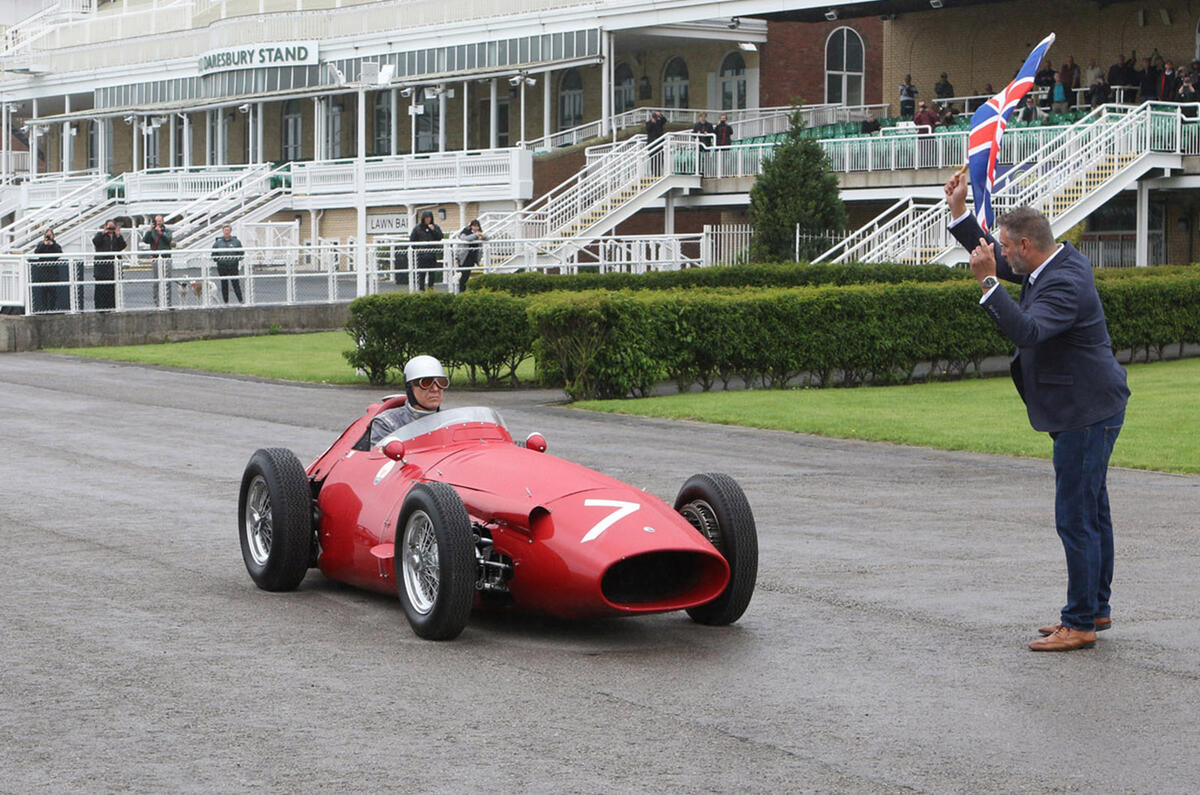Most people associate Aintree with horse racing and the annual Grand National steeplechase, when horses and their jockeys are pitted against notorious fences such as Becher’s Brook. Yet this venue in the outer suburbs of Liverpool also has a significant motorsport history, and a few dedicated souls are working to keep that legacy alive.
Back in 1955, the grand prix circuit laid out in and around the race course was the scene of one of Britain’s most famous races, when home-grown hero Stirling Moss scored the first Formula 1 World Championship British Grand Prix victory for a British driver. His preference for racing British cars is well known, but his breakthrough win came as part of Germany’s mighty Mercedes-Benz team.
The 1955 race, on 16 July, was the first British Grand Prix to run at Aintree and was won by Moss from Mercedes teammates Juan Manuel Fangio and Karl Kling. More than 100,000 fans packed in that day and cheered themselves crazy as Moss headed Fangio over the line in a formation finish.
Although British drivers had won grands prix before the war, and Mike Hawthorn had won in France in 1953 and Spain in 1954, this was the first win for Moss and the first home victory since the formation of the F1 World Drivers’ Championship in 1950. It was one of the results that confirmed Moss as a British sporting hero.
This was the first of five British Grands Prix to be held on Merseyside, but its brief time in the motor racing spotlight was fading into the 1960s as Brands Hatch and Silverstone became the homes of the British Grand Prix.
Aintree was left increasingly to the horses as the sprawl of Liverpool gradually surrounded it, although the shorter Club circuit remained active for national events until the 1970s and is still used sparingly for speed events and track days.
However, the memory of those heady days in the late 1950s and early 1960s remains strong, and the Aintree Circuit Club is keen to keep Aintree’s racing story alive. So, on 16 July this year, 65 years to the minute, Aintree again echoed to a racing engine as a period F1 car was flagged away from the start line of the original grand prix circuit.
Sadly, it wasn’t a Mercedes W196 as driven by Moss in 1955, but it was a very acceptable substitute, as restorer Rick Hall completed three laps in the Maserati 250F that Moss drove to victory at Monaco in 1956. With a police motorcycle escort, he toured the original three-mile track, which now involves two crossings of the public Melling Road.
The fact that the old circuit is no longer complete and even partially obscured by grandstands at Tatt’s Corner prevents any serious use. However, Mike Ashcroft from the Aintree Circuit Club is eager to keep the flag flying. He is hopeful of staging a more ambitious celebration of Aintree’s motor racing heritage and has had an encouraging response from race course owner The Jockey Club. So the Aintree motor racing story might not be over yet.
Paul Lawrence
READ MORE
Sir Stirling Moss obituary: the life and career of a racing legend




Join the debate
Add your comment
Well.....
....that was a bit of a non-event as a 'breaking news' wasnt it....?
Autocar, you really need to get your sh*t together.....when the editorial is completely obscured by your greed to add even more advertising , its time to review/reset or cease running the site!
Only half an article....a poxy note saying 'article continues below advertising' which it doesnt! Just a link saying 'read more' which inevitably doesnt link to anything.
Your desire to grab advertising revenues is obscuring your journalistic credibility.